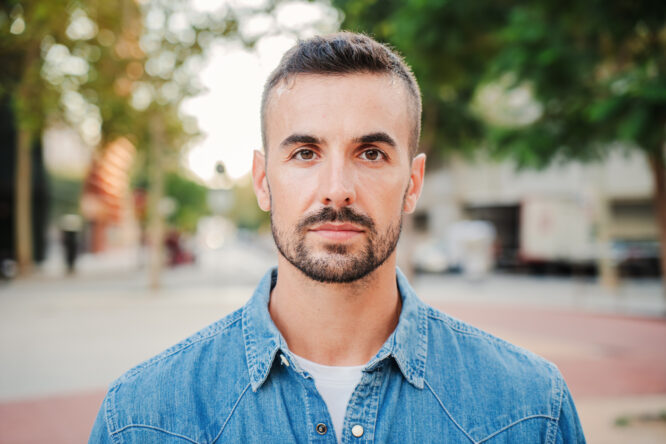“I’ll do it when I’m ready.” Sounds reasonable, but sadly, that moment usually never really arrives.

So-called “readiness” is often mistaken for a perfect blend of confidence, calm, and certainty. However, in real life, that feeling tends to show up after you take the first step, not before. Whether it’s leaving a relationship, starting a project, changing careers, or finally speaking your truth, waiting to feel completely ready often becomes the very thing keeping you still. Here’s why you just need to bite the bullet and start taking action.
1. Readiness isn’t a feeling—it’s a decision.

We imagine readiness will arrive like a green light: a moment where fear disappears and clarity kicks in. However, more often, it’s something you choose. You decide to move forward even while shaking, doubting, or second-guessing. If you keep waiting for full-body confidence to hit before making a change, you’ll wait forever. The real sign isn’t the absence of fear—it’s the quiet part of you saying, “This matters enough to try.”
2. Feeling ready is usually code for “I want zero risk.”

When you say you’re not ready, what you might really mean is: “I don’t want to fail,” or “I don’t want to be judged,” or “I want to guarantee this will work.” Of course, none of that comes with a guarantee. Growth always comes with discomfort. And sometimes “not ready” is just a disguise for “I’m afraid of getting it wrong.” That fear’s valid, but it’s not a good enough reason to stay stuck.
3. You’ve likely already outgrown what you’re stuck in.

People rarely say “I’m not ready” when they’re thriving. Usually, it’s the opposite. Something feels off. The old version of you doesn’t fit anymore, but the next version still feels too far away. That in-between space is uncomfortable, but it’s also a sign of movement. You’re not stuck because you’re failing—you’re stuck because your next level requires a leap. And that leap never feels comfortable.
4. Waiting for confidence means missing out on the thing that builds it.

Confidence isn’t a prerequisite—it’s a result. It comes from showing up, trying, learning, and proving to yourself that you can do hard things. If you wait to act until you’re confident, you rob yourself of the very process that would grow your confidence in the first place. It’s backwards. Clarity and self-trust come after the messy beginnings—not before.
5. “I’m not ready” can be a trauma response in disguise.

Sometimes, hesitation is less about logic and more about past experiences—times when things went wrong, when you weren’t supported, or when risk didn’t go well. Your nervous system remembers. In those moments, the key isn’t to push harder—it’s to notice the fear with compassion. Validate the hesitation, but don’t let it run the show. You’re allowed to be afraid and still take the next step.
6. Life doesn’t usually give you permission slips.

No one’s going to tap you on the shoulder and say, “Okay, it’s time now.” In fact, most big moves in life happen while you’re still unsure, still processing, still hoping you’re doing the right thing. If you’re waiting for certainty to fall from the sky, you’ll keep circling. The permission has to come from you. It starts the minute you stop asking if you’re allowed and just move anyway.
7. Your comfort zone is sneakier than you think.

Comfort zones don’t always feel good—they just feel familiar. You can be deeply unhappy and still cling to what’s known, simply because it’s predictable. Plus, your brain equates predictable with safe. Breaking out doesn’t always look like bold, dramatic action. Sometimes it’s just deciding to stop repeating the story that’s kept you small, and letting the discomfort of change be part of your growth.
8. Procrastinating with “readiness” often creates resentment.

Every time you delay something meaningful to you, a subtle kind of frustration builds—not just with life, but with yourself. You start wondering what’s wrong with you, why you can’t “just do it,” why everyone else seems to be moving. That resentment can either keep weighing you down, or become fuel. Let it show you what you’ve been craving underneath the fear. Let it remind you that the discomfort of action still feels better than the ache of avoidance.
9. You’re already doing hard things—you just don’t give yourself credit.

So many people convince themselves they’re not ready, forgetting all the things they’ve already survived. You’ve been brave in other ways. You’ve figured things out mid-air. You’ve adapted, grieved, rebuilt. This isn’t your first leap—it just feels like the scariest one because it matters. However, your resilience didn’t disappear. It’s still there, waiting for you to use it again.
10. Time won’t magically deliver courage—action does.

We assume that with enough time, the fear will go away. Of course, usually, the longer you wait, the louder the anxiety gets. Time doesn’t soothe fear. Action does. Clarity does. Movement does. Even a tiny step—a conversation, an email, a single brave decision—can start changing the energy. You don’t need a full plan. You just need momentum.
11. Most people are winging it more than you realise.

From the outside, everyone looks confident. Inside? Most people are unsure, afraid, or doubting themselves too. They just chose to move anyway. They decided that action was worth more than waiting for certainty. You’re not behind—you’re just comparing your fears to someone else’s highlight reel. Remember that the people you admire are also figuring it out as they go.
12. You’re already ready enough to begin.

You might not feel 100% confident, but you have curiosity. You have desire. You have a sense that something needs to shift. That’s enough. That’s where readiness lives—in the quiet part of you that’s done waiting. You don’t need to feel completely prepared. You just need to be willing. Start messy. Start afraid. Just don’t stay frozen. Because the truth is, you’re not stuck; you’re paused. And the only way out is forward.



